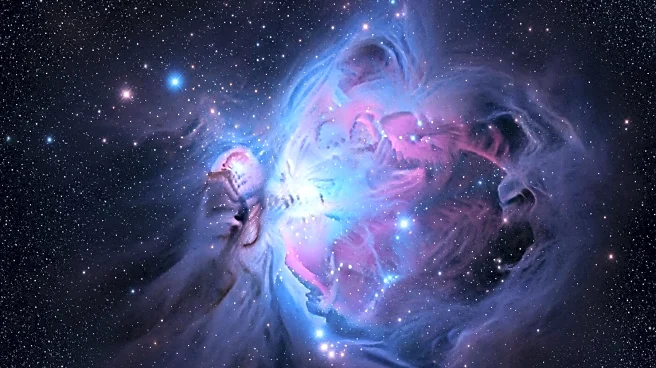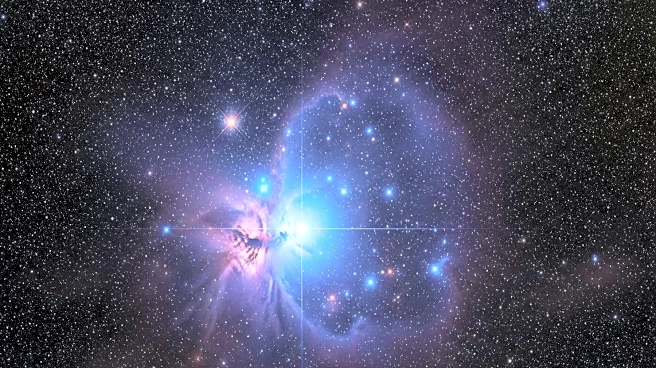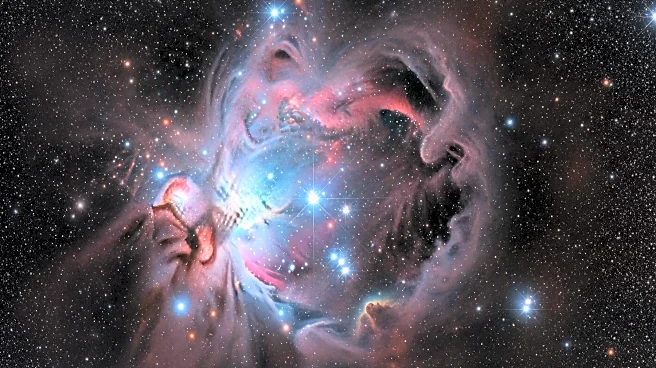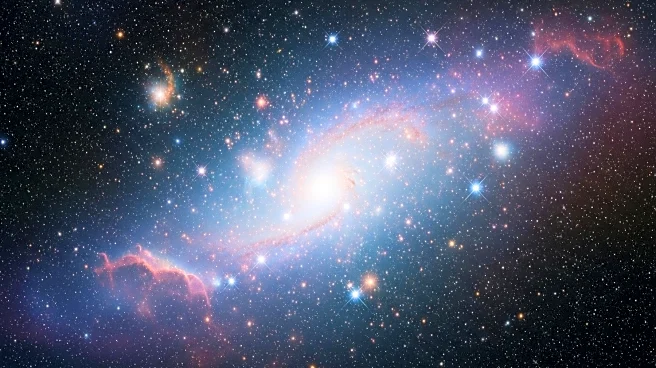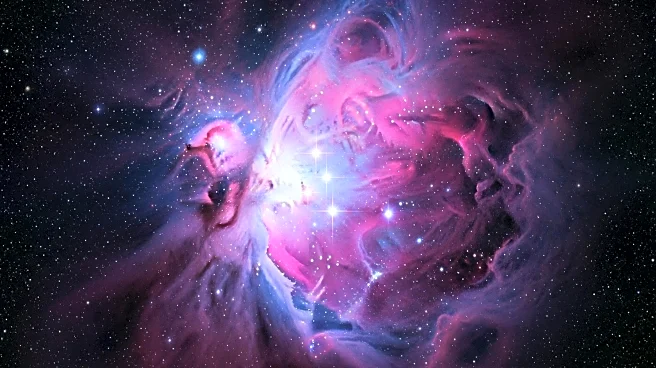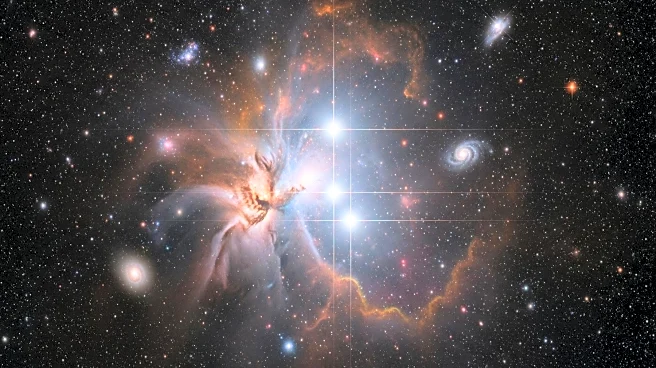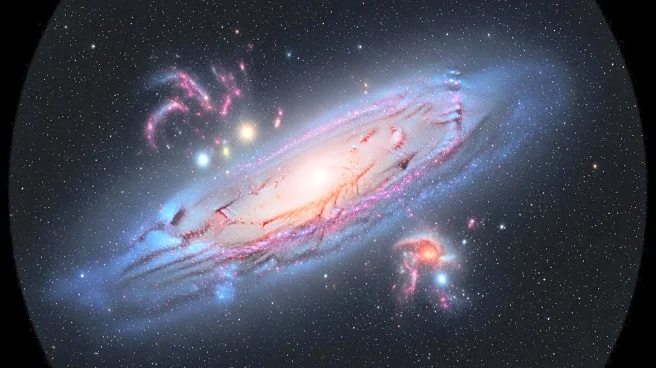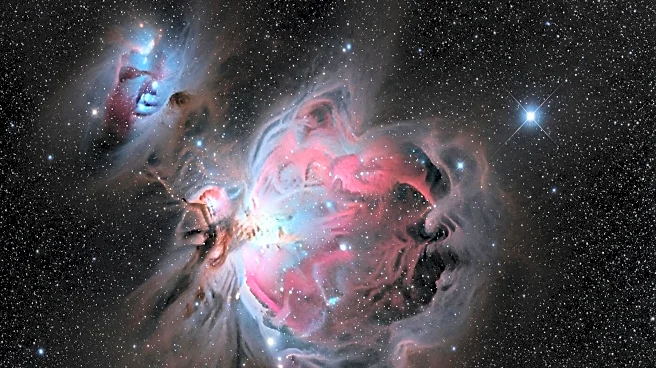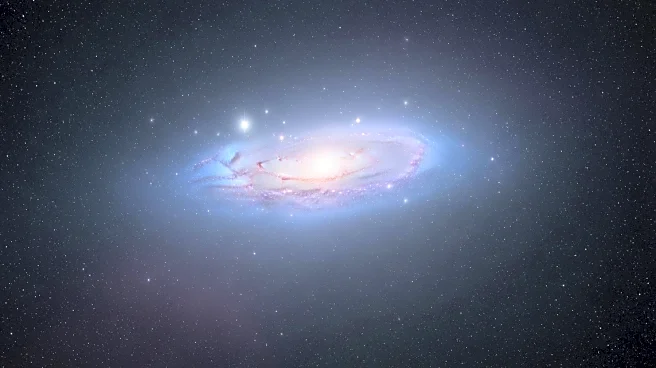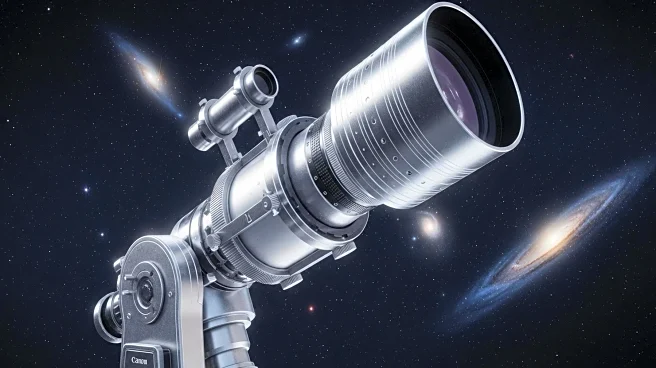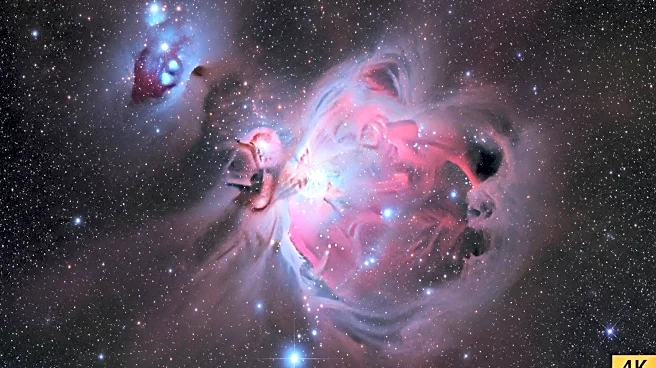What's Happening?
The James Webb Space Telescope (JWST) has captured a striking image of the Lobster Nebula, NGC 6357, located in the constellation of Scorpius. This nebula is a stellar nursery where new massive stars are being formed. The image reveals the inner edge of the nebula's cavity, characterized by jagged peaks of dense molecular gas. These peaks resist ultraviolet radiation but eventually collapse under gravity to form new stars. The Pismis 24 cluster, located at the center of the nebula, contains some of the most massive and hottest stars known. The JWST's infrared capabilities allow it to penetrate the dust and gas, revealing thousands of stars, including a triple star system.
Why It's Important?
The JWST's observations provide valuable insights into the process of star formation and the conditions within stellar nurseries. By capturing images in infrared, the telescope can see through dust clouds that obscure visible light, offering a clearer view of the stars and structures within the nebula. This information is essential for understanding the lifecycle of stars and the dynamics of star clusters. The ability to observe such regions in detail helps astronomers study the formation and evolution of massive stars, which have a significant impact on their surrounding environment and the galaxy as a whole.
